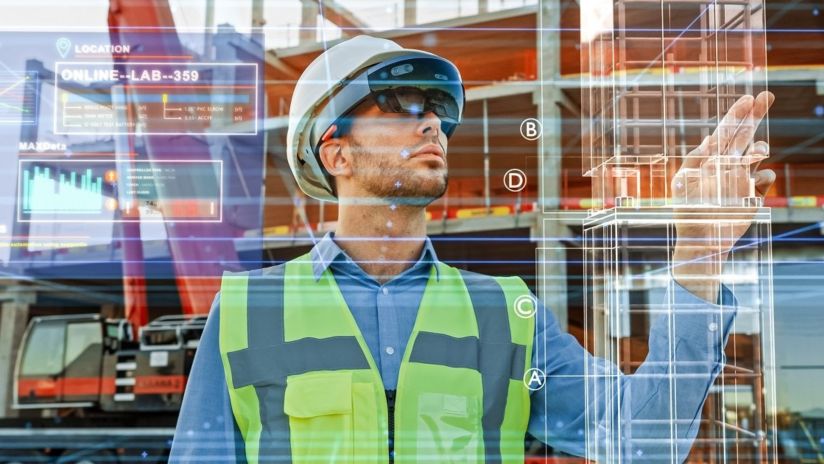Enhancing Productivity, Safety and Compliance in Construction with 5G and Beyond

Every automation technology must be underpinned by a resilient and intelligent network. At Telstra, we’ve been delivering the world’s leading network advancements to meet increasing demand since the beginnings of the mobile network, almost 42 years ago, with the official launch of the 007 network in 1981. Since the launch of 3G in 2006, we’re proud to have achieved 52 world firsts across 3G, 4G and 5G. In recent times, what we’ve been able to achieve with 5G is particularly powerful for industrial automation.
For construction industries in particular, automation is not only an opportunity for a boost in productivity, it is also a path to greater worker health and safety, and for achieving improved sustainability standards. The construction sector presents some unique, but not exclusive challenges, that make it an ideal candidate to introduce automation into its ecosystems. This dynamic industry requires a substantial amount of flexibility and reliability when it comes to the types of solutions that Telstra have been providing across Information Technology (IT) and Operational Technology (OT) convergence. If you haven’t been watching the space closely, let’s explore some of the specific 5G powered solutions that are helping to deliver safer and more efficient construction processes.
Helping to enable safer, more secured worksites
Safety and security are all about reliable and constant communication. The introduction of autonomous robotics and drones backed by 5G-enabled Closed Circuit Television feeding into Artificial Intelligence systems have been a leap forward in building and site inspection processes, keeping employees out of harm's way while hazards and accessibility concerns are investigated.
For general operations, using push-to-talk communication services helps to ensure individuals and teams are in contact wherever they may be on site. Through solutions like Telstra Dedicated Network, 5G can also be delivered for private Enterprise use to help ensure a business has control and assurance of service separate from the public network. This includes the use of micro-cell technology to push wireless access into areas like tunnels where signals would otherwise be blocked out. Where safety is imperative, this is a powerful feature.
Reduce risk and liability
That power of private 5G can also be applied to wider construction needs. Risk management is a constant in construction work, and delivering high resolution data feeds with near real-time outputs is particularly critical during collaboration with offsite partners and experts.
We know that excavation works are an important phase for both cost and safety management. From pipes and cables to underlying structures, detailed environmental analysis is essential. Telstra is seeing incredible applications of Augmented Reality/Virtual Reality technology being used on sites. Ground Penetrating Radars are one particularly impressive tool being used to detect underground obstructions and irregularities. Using the high bandwidth and low latency capabilities of 5G, feeding this data to remote processing systems is helping to map out underground areas with incredible accuracy ahead of excavation works.
And where problems are identified in later stages, your private 5G can help ensure you are able to bring remote expert guidance to your site with ease, without travel delays or additional safety dilemmas.
Optimising resources
The above strengths alone are a massive boost to construction operations, but we cannot discount the value that 5G brings to pure optimisation. The increased bandwidth, the superfast speeds, and the high connection density of devices offer significant benefits in conjunction with the deployment of Internet of Things technologies.
Internet of Things sensor networks are becoming an essential tool in tracking assets and resources across a construction site, with near real-time data feeds monitoring sites with granular detail for both employee health and equipment performance.
5G-enabled sensors can be deployed widely on a site to monitor for dust, noise, air quality, temperature, humidity, gas leaks, and other hazards to help ensure teams on site avoid dangerous exposure. Other sensors can be applied to construction equipment, analysing use loads and engine performance metrics of cranes and vehicles in real-time to offer predictive maintenance scheduling. With data-driven proactive servicing plans in place, sites can help ensure maximum uptime and minimum breakdowns.
Looking to the future
5G networks have continued to evolve since Telstra achieved a world first end-to-end 5G non-standalone data call on a commercial mobile network in 2018.additional features such as Network Slicing and Edge solutions have seen us enhance capability for the particular needs of industrial and enterprise customers – and 5G Advanced continues to pave the way toward ever more advanced networks of the future. We are particularly excited by what we can do to deliver more resilient compute and storage via Telstra Edge backed by Telstra Enterprise 5G.
But what of 6G? In the next few years, Telstra will play an active role in the development of 6G specifications, just as we did with 4G and 5G. The Australian environment is a unique geographical challenge and needs a voice in the room when it comes to how new wireless standards can support the challenges of dense urban areas and performance in remote outback locations.
6G aims to offer even more diverse network performance and to suit the growing array of specific industrial use cases that have emerged during the 5G era. Along with ongoing improvements to ubiquitous and instant communications, there will be a growth in advanced network intelligence features to increase support for automation, Internet of Things, Artificial Intelligence, Augmented Reality/Virtual Reality, and more decentralisation. Advanced intelligence will be built into the network with automation capabilities that will deliver differentiated and omnipresent services managed by the network in near to real time.
We expect to see the first early software drop for 6G in ~2028. The work we continue to put into our 5G network over the coming years, including 5G Advanced, will prepare us for the opportunities that will arrive with these next generation features as we enter the 2030s.
Today and tomorrow
Today, we already know that what Telstra offers goes far beyond simple connectivity. Through Telstra Purple, our strategic acquisition of Aqura and Alliance Automation, and our joint venture with Quantium, we now work with customers to design and deploy industrial networks and converge Information Technology (IT) and Operational Technology (OT) environments. We can help any construction company to plan their deployments of Artificial Intelligence, analytics, and Internet of Things, all delivered with end-to-end cybersecurity and designed with a view toward continued access to new capabilities as they emerge in coming years.
If you're interested in learning more about what we have to offer, we encourage you to explore our solutions and speak with one of our industry experts. Telstra is here to help you develop a smart solution for your business.


